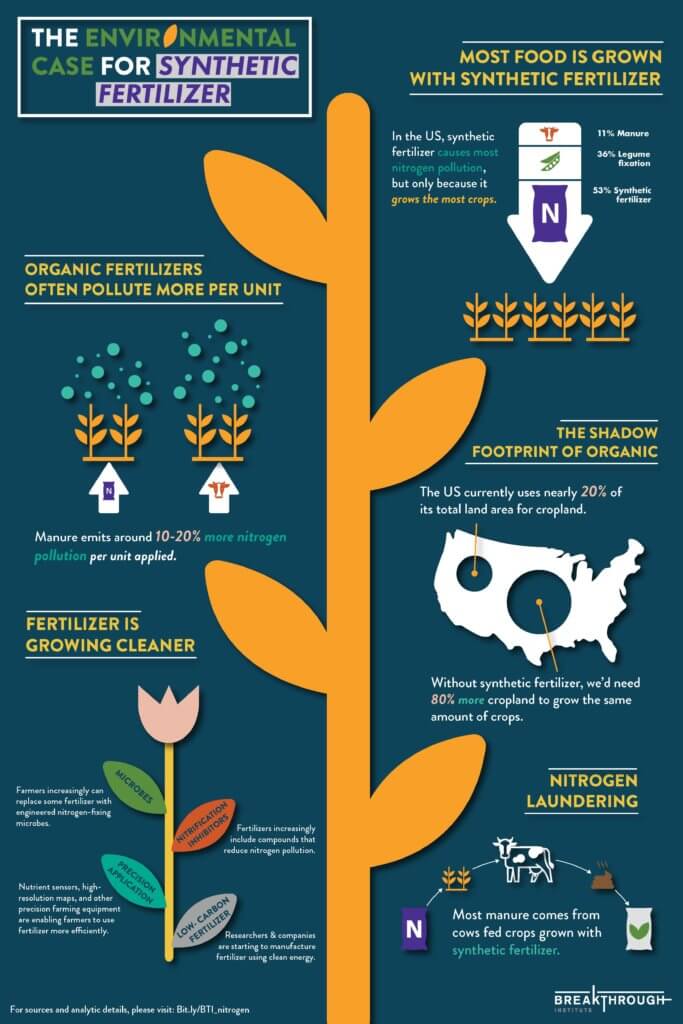Many people argue that synthetic fertilizers are at the heart of the problem. Because synthetic fertilizers are the biggest contributor to nitrogen pollution, the thinking goes, we should radically limit their use, if not eliminate them entirely from the food system. The solution, in other words, lies in organic fertilizers such as animal manure.
However, this would be ineffective, infeasible, and counterproductive for several reasons. There is a strong environmental case to be made for synthetic fertilizer, captured in the suite of infographics below.

To view this infographic on a separate page, click here.
First, while we should make the best possible use of animal waste, applying manure to crops often generates even more nitrogen pollution than synthetic fertilizer. Synthetic fertilizers are responsible for the most pollution only because they are the most used, not because they are worse for the environment.
Second, doing away with synthetic fertilizer would expand the footprint of agriculture, threatening ecosystems and worsening climate change. Because there isn’t enough manure and compost, we would need to expand our use of other nitrogen sources (legumes and fallowing fields) that require extra land — a lot of extra land. Eliminating synthetic fertilizers would require an 80% increase in cropland.
Finally, focusing on replacing synthetic fertilizer overlooks more promising ways to reduce nitrogen pollution. For instance, farmers can adopt precision farming equipment that helps them apply just the right amount of fertilizer to their crops. These technologies include soil nutrient sensors, tractors with GPS and auto-steering, and machines that vary how much fertilizer they apply. Read more here about innovative ways to reduce nitrogen pollution from agriculture.
Alyssa Codamon is Multimedia Producer at Breakthrough. Dan Blaustein-Rejto is a Senior Food and Agriculture Analyst at Breakthrough. Follow him on Twitter @danrejto
This article originally ran at the Breakthrough Institute as The Environmental Case for Synthetic Fertilizer and has been republished here with permission.































